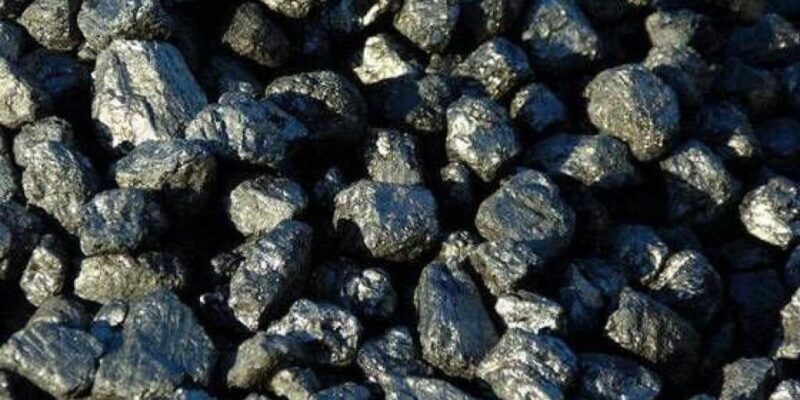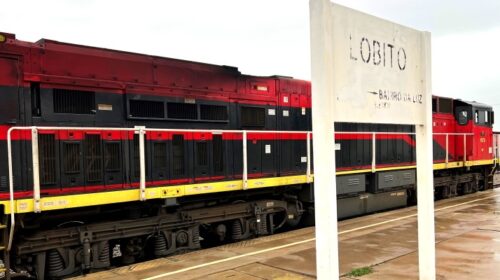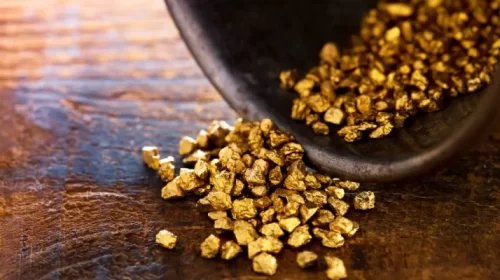Demonization of 3T (coltan, cassiterite & tungsten) traceability, Global Witness plays SMB PR agent
TRIBUNE – With more than 60% of the world’s coltan reserves, the DRC has regained, following significant progress in terms of strengthening the control and transparency of supply chains, its letters of nobility by positioning itself usefully on the market. international 3 T (coltan, cassiterite, tungsten).
Since 2017, and the trend continues, it is the first producer of coltan, thus relegating, on the one hand, to the bottom of the scale certain neighboring countries which thus pranced unduly in the lead and giving, on the other hand, a lead to retaliate against several multinationals inclined to control these strategic minerals.
In order to make it lose this position, an all-out demonization campaign is being waged with drum beating by pullers of strings lurking in the shadows to discredit its traceability system through certain interposed NGOs and international media, resulting in its possible exclusion from the international market. The recent controversial report by Global Witness attests to this, in which the SMB (Société Minière de Bisunzu) serves as a Trojan horse.
Global Witness is in the process of wanting to review all the significant progress made in the DRC more than a decade ago in terms of strengthening the control and transparency of the supply chains of 3T minerals from conflict zones. and high risk.
This is the substance of its recent report published at the end of April (2022) entitled “THE LAUNDRY ITSCI. Investigation into a due diligence program apparently involved in the laundering of conflict minerals”.
In this volley of green wood, the British NGO balances between the due diligence and traceability programs BSP (Better Sourcing Program) and ITSCI (International Tin Association) which engage in competition which does not speak its name and the multinationals which are committed to a relentless struggle for control of 3T minerals in the DRC, particularly in Kivu.
Moreover, said report essentially speaks of artisanal mining in North and South Kivu of these reputedly strategic minerals, while Tanganyika, in the former Katanga, also knows this mining activity. The challenge is therefore Kivu, with the locality of Rubaya, in Masisi (North Kivu), which alone has 15% of the world’s coltan reserves.
This antagonism is, without a doubt, the center of interest of Global Witness in order to discredit the 3T supply chain in the DRC and, by extension, to annihilate all the work done over the past ten years. by the services of the State, as well as the Congolese defense and security forces in the fierce fight against the activism of local and foreign armed groups.
From this perspective, ITSCI is portrayed as a laundromat, a bleaching laboratory for “dirty” Congolese minerals. In other words, minerals from non-validated mines, including those owned by militias or exploited through child labor, can enter the program’s supply chain and be exported. Moreover, its incident reports are presented as frequently minimizing or even ignoring cases that could seriously compromise the integrity of its supply chain.
By way of illustration, this international NGO, after a review in South Kivu, borrows in North Kivu from a Congolese mining operator, in this case SMB, who left ITSCI with a bang in 2019 to embrace BSP, his rehashed words on a recurring basis on mining activity in Rubaya. She presents her as a victim of the actions and maneuvers of the ITSCI which ultimately caused her to lose control; thereby exposing it to serious financial difficulties and to the sale of the minerals from its concession to another company, SAKIMA (Société aurifère du Kivu et du Maniema).
And to also repeat in chorus the assertions of the UN Group of Experts according to which “minerals smuggled by SMB miners in the neighboring SAKIMA concession would subsequently be illegally introduced into the supply chain of ITSCI”. This would multiply by ten the reference estimates used by this program to assess the volume of minerals to be tagged produced by SAKIMA.
Without being affirmative or precise about the amount of minerals actually taken from the SMB concession, Global Witness notes that, in 2020, state agents “allegedly smuggled hundreds of tons of coltan” from its concession into the chains of mining. supply of ITSCI.
Indeed, SAKIMA, in its current stature, does not produce minerals. She doesn’t buy any either. Public company and owner of PE 76 in Masisi and other concessions elsewhere in Grand Kivu, it only benefits from the royalties paid to it by partners with whom it has signed operating or purchase contracts in its concessions. . Therefore, Global Witness does not seem to understand the history of the improper acquisition of PE 4731 by SMB in Rubaya.
As a reminder, the SMB concession (PE 4731) is not close to that of SAKIMA; it is rather included in this one, PE 76. It is an island of 36 squares, amputated in 2000 as spoils of war from the property of SAKIMA, currently reduced to 324 squares, during the occupation of this part of the Republic by the rebel movement RCD/Goma, of which Senator Edouard Mwangachuchu, boss of SMB, was a senior official. Also a member of other satellite rebel movements which took over on the ground with external ramifications, namely the CNDP and the M23, he further consolidated the position of his company which, more than 20 years later, has never realized its vocation for the industrial exploitation of coltan.
If there is therefore a company which has exploited minerals under massive human rights violations and run mines with the complicity of militias, it is indeed SMB, whose RCD/Goma, CNDP and M23 have made up of armed forces.
The recent affair of Colonel Van Kasongo, with irregular police guarding SMB in Rubaya, brought to light what everyone had suspected for a long time, namely the use of a ruthless fearless militia against the local population accused, rightly or wrongly, of stealing minerals from their concession. There is no need to recall that the bodies of the three of his victims, among the multitude recorded, have been kept since June 2019 in the morgue of the General Hospital in Goma.
The population of Masisi demands that justice be done above all else. Court decisions exist to this effect, but remain unapplied!
What Global Witness also seems to ignore is the recent arrest of Senator Edouard Mwangachuchu and his custody for 48 hours at the Military Prosecutor’s Office in Kinshasa in connection with the case of the aforementioned deaths. Also arrested at the Ministry of Defense, he regained his freedom after paying bail. His arrest follows the referral to this military court in the capital by the population of Masisi, through the COOPERAMMA (Cooperative des Artisans Miniers de Masisi), which does not budge with the case of its sons mowed down by the bullets of the SMB Guard Police.
Despite the first and second degree prison sentences in Goma, the boss of SMB is still free to move. Also convicted in several trials in Goma following his allegations of the theft of SMB minerals slanderously attributed to third parties, Ben Mwangachuchu, a naturalized Congolese American, brother of the senator and CEO of SMB, turned out to be a juggler vis- vis-à-vis justice so as not to serve his sentences in this way.
Strengthening the Congolese traceability system: the crux of the problem
The Congolese mining services have always ensured the traceability of all the minerals produced in the country, including those of the 3 T. They lost this privilege following the Dodd-Franck Act, dictated by the bulimia of American multinationals to control and to regulate the trade of these increasingly strategic minerals in the high technology industry. This has contributed enormously to the rise in their prices on the international market.
On the other hand, there is the attempt to resume the production of said ores by Brazil, Canada and Australia which have large deposits. Only here, unlike in the DRC where these minerals are at ground level, their exploitation is expensive in the three aforementioned countries; the mines are nearly 600 meters deep. It goes without saying that Congolese minerals were thus doomed. This explains the extreme demonization of the mines from which they were extracted; mines reputed to be sources of dirty minerals, and therefore conflict minerals.
With a view to improving the governance of the sector, as underlined in its Global Witness report, the governments of the countries of the region, the United Nations, the CIRGL (International Conference on the Great Lakes Region) and the OECD (Organization Economic Co-operation and Development), in consultation with industry and civil society stakeholders, eventually developed new guidelines and procedures more than a decade ago.
Among these procedures is the creation of traceability mechanisms which, alongside government validation of mines, aim to establish a supply of “conflict-free” and responsibly mined minerals. The result has been programs that meet the requirements of the OECD Due Diligence Guidance for Mineral Supply Chains from Conflict-Affected and High-Risk Areas. Imagined in the West, these programs, including ITSCI, have been implemented in the DRC and in Rwanda, which has almost no 3T deposits.
In this way, Rwanda has proved to be a hub for the laundering of contraband minerals from Congo-Kinshasa, becoming, as a result, the leading producer of coltan in Africa. Western multinationals have therefore settled in the country of a thousand hills to procure without the slightest scruple the minerals thus laundered from the DRC.
But with the strengthening of its traceability system, enhanced, among other things, by public debate between stakeholders, incident reporting, alerts and field monitoring, the DRC has made significant progress in terms of strengthening control and the transparency of the chain of custody with tangible benefits that translate into an increase in the volume of exports of 3T certified “conflict free”. It has thus regained its letters of nobility by usefully positioning itself on the international market as the leading producer of coltan since 2017. And the trend continues.
Consequence: the windfall is becoming increasingly rare for Rwanda, including the multinationals that had settled there.
Make the DRC pay for its audacity
The rage to control the lost market shares which are on an even more downward curve calls for certain strategies to make the DRC pay for the audacity that operators in the sector are showing. Among these operators, some nationals who are in the front line and whose audacity to move from artisanal to industrial exploitation is highly evident and is rapidly materializing.
The Global Witness report seems to fit into this perspective. How not to say it if in its first recommendation to the Congolese Government, the British NGO calls for “Carry out a thorough and independent evaluation of the implementation of the ITSCI program and, depending on its findings, consider revoking the permit to operate the program and study the possibilities of replacing ITSCI with a program managed by an independent institution”? How can he predict the follow-up to be given by the Congolese State with regard to ITSCI? And what about the other program, BSP?
It appears, if need be, that the DRC risks being drawn into the trap of competition between the due diligence and traceability programs BSP and ITSCI, on the one hand, and the fight for the control of strategic minerals. by the multinationals, on the other hand. Global Witness and certain international media play on it according to their interests and current issues.
Wanting therefore to call into question all the efforts made by Congo-Kinshasa through a report drawn up following an investigation carried out on the basis of a questionable methodology with regard to the law and on the scientific level, would proceed from a manifest will to deprive COLTAN from the DRC of access to the international market at a time when the price of this metal is experiencing an unprecedented improvement. It is a way of plunging thousands of Congolese who benefit directly and indirectly from artisanal mining back into poverty. It is as if the well-being of the Congolese does not delight Global Witness.
It is common knowledge that no traceability and due diligence system is perfect. This is why the DRC has adhered to the profession of faith of the OECD, through its Guide, which recommends a proactive, evolving and reactive exercise. Thanks to the improved due diligence and traceability program in Masisi, and even elsewhere, Congo-Kinshasa has succeeded, since 2014, in channeling significant quantities of 3T minerals into the official marketing circuit. At the same time, it ensures that the optimal certification conditions are maintained at a required level in accordance with the MR CIRGL.
124 total views , 1 views today





